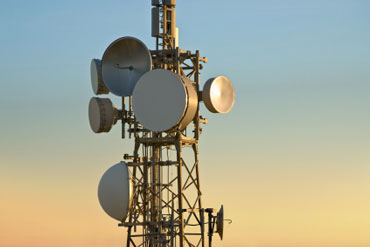January 2, 2018
The answer is yes, yes and yes. Pure speed is the obvious and immediate benefit along with the added value of improved connectivity. The decision of Wave 1 (3x speed) or Wave 2 (4-5x speed) is likely only based on the price differential.
The 802.11ac wave 2 protocol takes advantage of what's known as multi-user, multiple input/multiple output (MU-MIMO). What this essentially means is the wireless access point can send multiple frames to multiple clients using the same frequencies. It does this by utilizing multiple antenna arrays built-in to an 802.11ac access point. This will prove to be very beneficial in densely populated WiFi areas.
Another advantage, channel bonding, is the process of combining multiple channels together with the purpose of transmitting higher bandwidths. Imagine going from 40 MHz channel bonding, to 80 MHz to 160 MHz channel bonding (802.11n -> 802.11ac Wave1 -> Wave2). Wave 1 supports theoretical data rates up to 1.3 Gbps and Wave 2 supports theoretical data rates up to 2.5 Gbps.
The beamforming technology in 802.11ac allows for longer range connectivity as well as navigating the challenges of physical obstructions. For example, WiFi is often extended beyond the boundaries of the brick and mortar to the outdoors, perhaps a courtyard or parking lot. In the case of certain building types beamforming technology provides connectivity where other WiFi technologies could not (i.e. warehouses and old buildings with interior concrete and brick walls).
Because the 802.11ac access points are no longer in the early adoption phase of the product life cycle, price is not a deterrent. Plus, the 802.11ac standard is backward compatible.
So what about 802.11ax? Most industry pundits agree that 802.11ax will not be fully certified by IEEE until sometime in 2019. It's unclear when we'll see hardware to support the new standard. The other issue is that there are two LTE technologies, LTE-U (unlicensed band) and LTE-LAA (licensed assisted access), vying for our attention.
In North America LTE-U (4G/LTE) is emerging as the leader in the unlicensed space and competes in the 5 GHz spectrum with WiFi. The FCC requires that devices do not interfere with each other in the unlicensed spectrum. The LTE-U Forum has issued specifications, performed testing and issued a report that LTE-U does not interfere with WiFi. The WiFi Alliance is not in agreement. The two groups will hash out the specifications and eventually products will come to market. One possibility is that devices will support both 802.11ax and LTE-U (the chip sets would have to be manufactured for this purpose).
The bottom line, if you need increased speed and coverage there is no reason to wait. In the world of Internet connectivity, 2-3 years equals forever when suffering with inadequate network connections. OF COURSE, you'll want to start with the WLAN site survey to ensure a proper design and smooth upgrade transition.
For more information about Signal Boosters contact us at 978-952-6000 or email us at sales@directnetserv.com.
